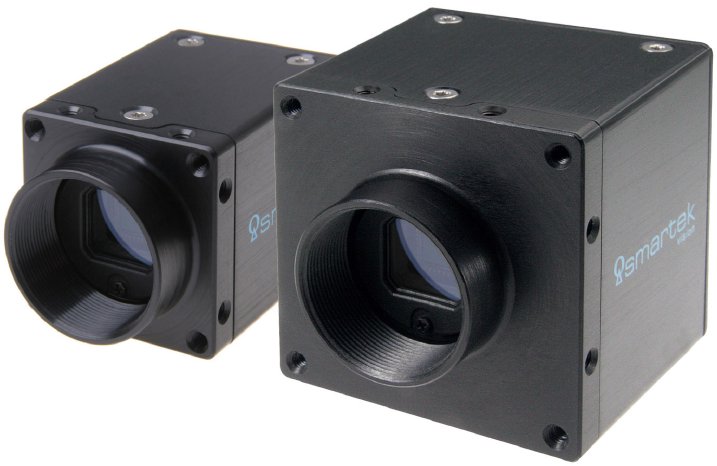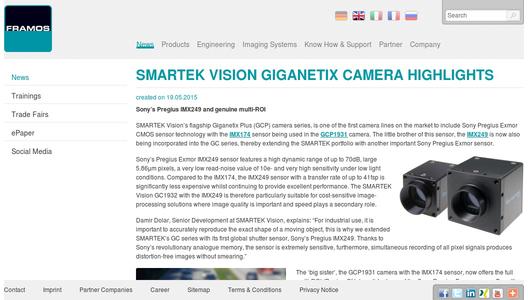Sony’s Pregius Exmor IMX249 sensor features a high dynamic range of up to 70dB, large 5.86µm pixels, a very low read-noise value of 10e- and very high sensitivity under low light conditions. Compared to the IMX174, the IMX249 sensor with a transfer rate of up to 41fsp is significantly less expensive whilst continuing to provide excellent performance. The SMARTEK Vision GC1932 with the IMX249 is therefore particularly suitable for cost-sensitive image-processing solutions where image quality is important and speed plays a secondary role.
Damir Dolar, Senior Development at SMARTEK Vision, explains: “For industrial use, it is important to accurately reproduce the exact shape of a moving object, this is why we extended SMARTEK’s GC series with its first global shutter sensor, Sony’s Pregius IMX249. Thanks to Sony’s revolutionary analogue memory, the sensor is extremely sensitive, furthermore, simultaneous recording of all pixel signals produces distortion-free images without smearing.”
The ‘big sister’, the GCP1931 camera with the IMX174 sensor, now offers the full multi-ROI (Region Of Interest) features of the Sony Pregius Exmor sensor. By setting regions of interest (ROI), a certain section of the image can be selected, this increases the transfer performance with smaller volumes of data being sent and improves the camera performance.
Until now, only vertical regions of interest (ROI) could be sensibly used with CMOS sensors because the entire line is nevertheless read out with horizontal ROIs. By adapting the firmware, SMARTEK’s engineers were amongst the first to make this feature of the IMX174 sensor available in the GCP1931 camera. With freely definable definitions of blind columns and lines, several ROIs can now be laid out in a grid structure to make much better use of the bandwidth.
A further feature permitting loss-free data compression at a colour depth of 10 and 12 bits and an increase of transfer performance with a bandwidth saving of 30% will become available in the SMARTEK GCP series this summer.


